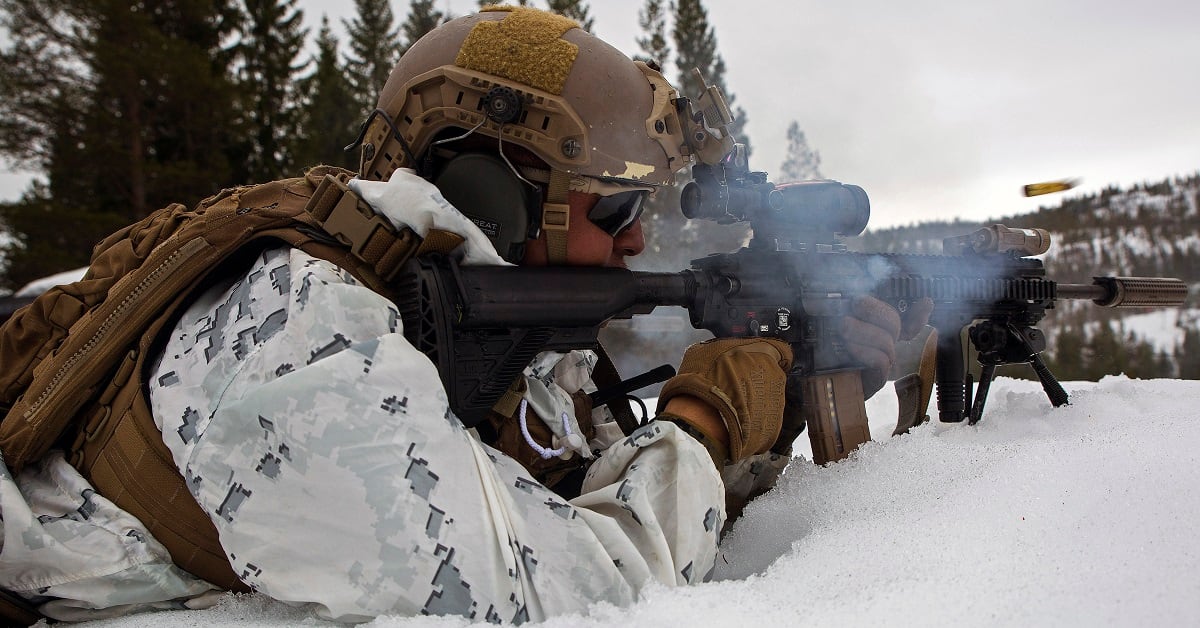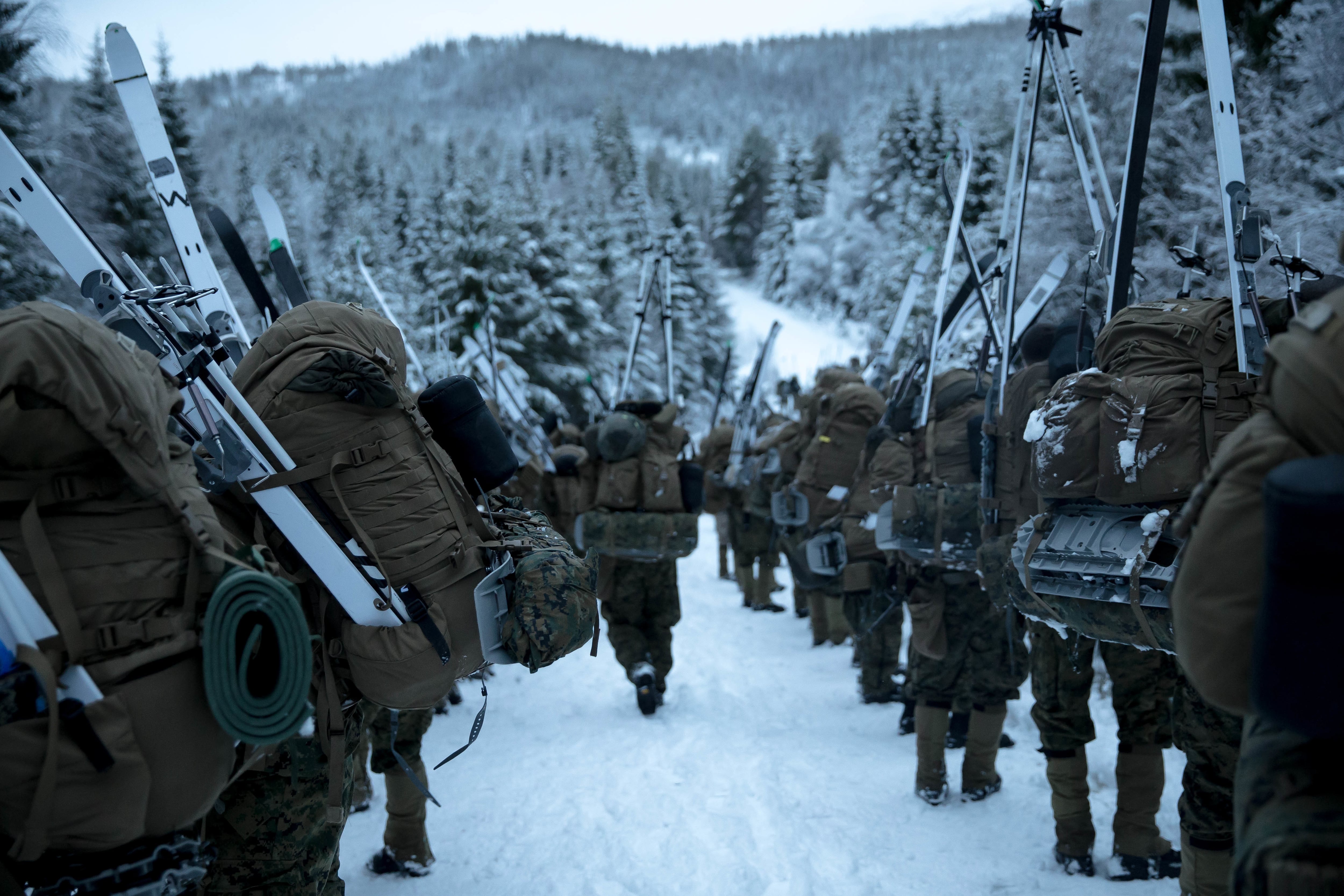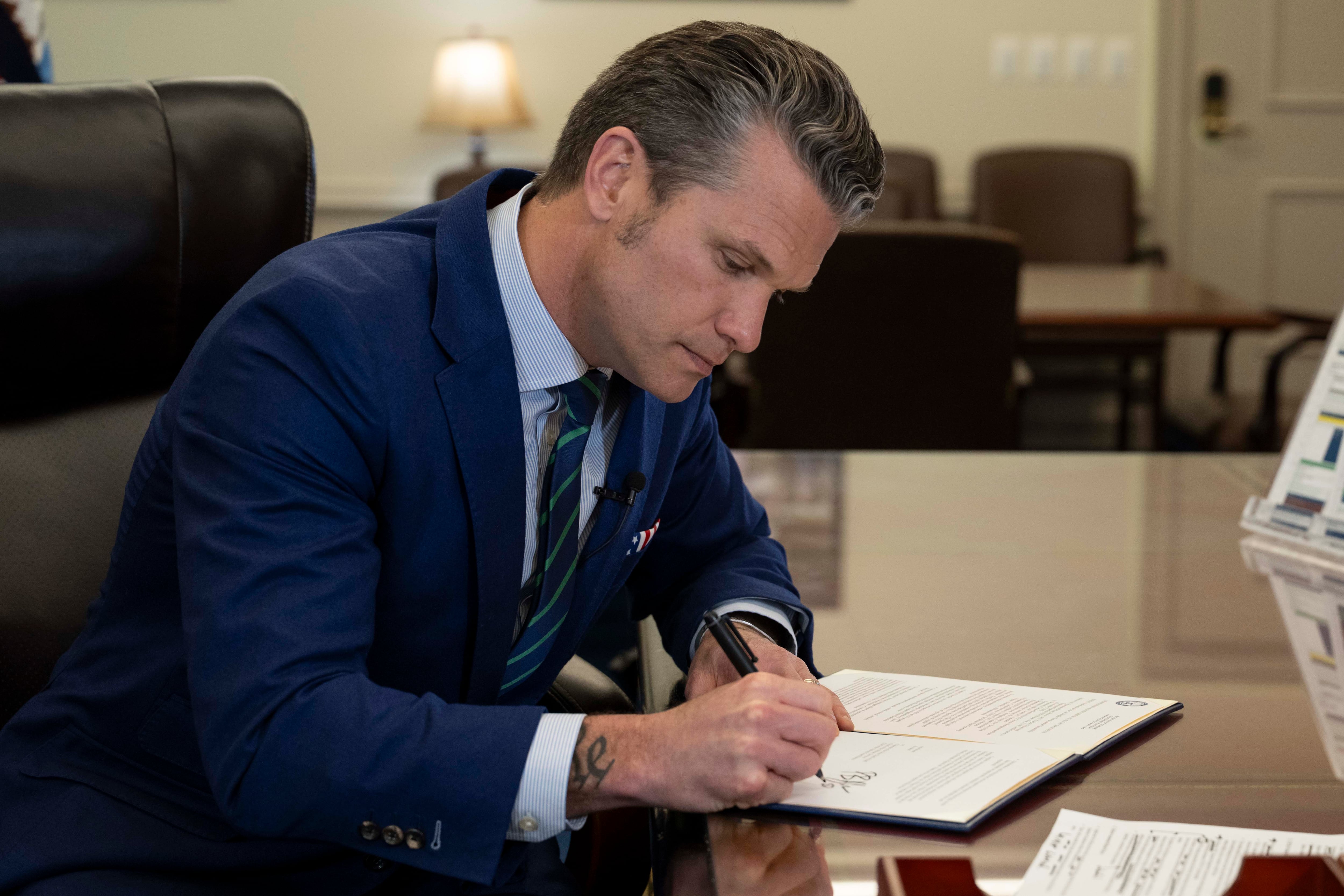A new Marine rotation is expected in Norway in the coming weeks as the Corps continues to prep its forces for a potential cold-weather fight.
Roughly 700 Marines from 1st Battalion, 8th Marine Regiment, will be the primary unit deploying for the next Marine Rotational Force–Europe rotation through Norway, according to Lt. Col. Rob Shuford, a II Marine Expeditionary Force spokesman.
“They will officially conduct a transfer of authority with the previous unit, 3rd Battalion, 8th Marine Regiment sometime in early April,” Shuford told Marine Corps Times.
This will be the Corps’ fifth six-month rotation to Norway.
During the previous rotation, Marines focused on learning how to survive and fight in extreme cold-weather environments. The rotation also worked with partner forces on Arctic and mountain warfare. That will still be a focus for 1st Battalion during the opening salvo of their deployment.
“They will conduct a variety of cold weather training events, but will also shift their focus as the seasons change," Shuford said. “This rotation of troops allows us to continuously build our relationships with our Norwegian, and other regional partners, through a variety of training exercises and cultural exchanges."
Specific training plans are not available at this time, however, Shuford said.
He did add that the Marines are “scheduled to conduct cold weather training early in its deployment and to participate in military exercises and training events throughout Europe during the late spring and summer months.”
The rotation is a good example of II MEF’s support to U.S. European Command’s mission on the continent, Shuford said.
In October and November, Norway hosted one of NATO’s largest exercises, known as Trident Juncture, which involved roughly 40,000 military personnel from 31 nations and simulated NATO’s response to an attack against one of its allies.

Major exercises like that, alongside the resurrection of the Navy’s Norfolk-based 2nd Fleet to focus on the Atlantic Ocean, provide opportunity for the Corps.
“One of our focuses over the past few months has been increasing our staff integration with 2nd Fleet after they activated last year,” Shuford said. “II MEF and 2nd Fleet did a lot of work towards this integration through Trident Juncture and have continued looking at ways the Navy-Marine Corps team can continue to enhance our natural partnership with future EUCOM exercises.”
During the last Norway rotation with 3/8, Marines worked with the British Royal Air Force out of Holbeach Range, England, for close-air support training and also northern Sweden during Exercise Northern Wind.
The 3/8 rotation, which began in October and included 700 Marines, was the Corps’ largest-yet deployment to Norway as part of its continuing rotational presence.
RELATED

Previous Marine rotations were limited to roughly 330 personnel. The increase to 700 Marines was accompanied by the opening of a second training area closer to the Russian border in the Troms region.
The expanded U.S. footprint was agreed to by the Norwegian government over the summer, during a time of renewed tensions with Russia.

Kremlin officials warned that the increased presence of U.S. troops could be interpreted as an aggressive action, and warned of consequences.
In addition to the training opportunities, analysts also argue that the Corps’ heel-to-toe footprint in Noway acts as a deterrence force against a possible Russian incursion.
U.S. forces have also been storing gear in a series of caves in Norway to equip a Marine Air-Ground Task Force if a war were to break out in the Europe.
Kyle Rempfer was an editor and reporter who has covered combat operations, criminal cases, foreign military assistance and training accidents. Before entering journalism, Kyle served in U.S. Air Force Special Tactics and deployed in 2014 to Paktika Province, Afghanistan, and Baghdad, Iraq.





